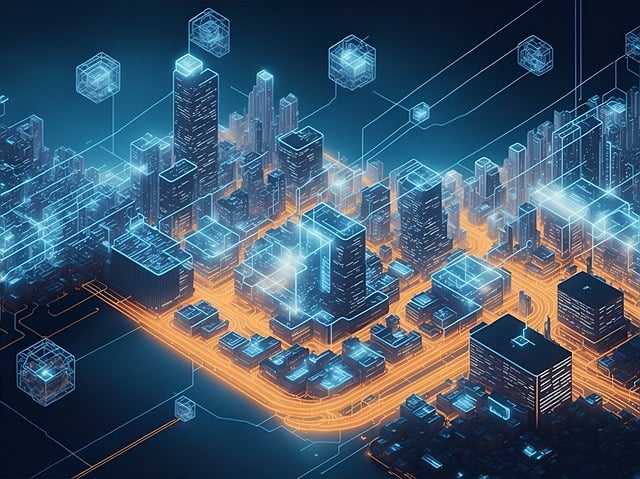Technology is everywhere in our lives. From the smartphones we use to the internet that connects us, it’s a big part of what makes the world go round today. This guide will help you understand the basics of modern technology, making it easy for you to grasp how it impacts your everyday life.
What Is Technology?
At its simplest, technology is about using tools and systems to solve problems and get things done. It can be as basic as a hammer or as advanced as artificial intelligence. Technology includes both physical devices (like computers) and software (like apps and programs).
Why Technology Is Important
- Makes Life Easier: Technology helps us do tasks more quickly and conveniently, such as shopping online instead of going to stores.
- Keeps Us Connected: It helps us stay in touch through emails, social media, and messaging apps.
- Drives Progress: Advances in technology improve things like healthcare, transportation, and communication.
- Boosts Learning: Technology gives us access to tons of information and learning tools online.
- Improves Efficiency: It makes work processes faster and more accurate. Know more!!
Key Areas of Technology

Get step-by-step points to understanding.
1. Information Technology (IT)
1.1. Computers
- Basics: Computers are devices that perform tasks based on user commands.
- Types: Includes desktops, laptops, tablets, and servers.
- Uses: Work, entertainment, communication, and more.
1.2. Software
- Basics: Software includes the programs and applications that run on computers and devices.
- Types: Operating systems (like Windows), productivity tools (like Microsoft Office), and special applications (like photo editors).
- Uses: Performing tasks, from writing documents to browsing the web.
1.3. The Internet
- Basics: A global network that connects millions of computers and devices.
- Components: Websites, email, social media, and online services.
- Uses: Finding information, communication, and entertainment.
2. Mobile Technology
2.1. Smartphones
- Basics: Portable devices that combine phone functions with computing capabilities.
- Features: Touchscreens, apps, cameras, and internet access.
- Uses: Communication, social media, navigation, and more.
2.2. Tablets
- Basics: Larger than smartphones, with similar functions.
- Features: Touchscreens, internet access, and often used for reading or media.
- Uses: Tasks needing a bigger screen, like watching videos or reading e-books.
2.3. Wearables
- Basics: Devices worn on the body, such as smartwatches and fitness trackers.
- Features: Track health metrics, notifications, and sometimes GPS.
- Uses: Monitoring physical activity, health, and staying connected.
3. Emerging Technologies
3.1. Artificial Intelligence (AI)
- Basics: Technology that performs tasks requiring human-like intelligence.
- Types: Includes machine learning, natural language processing, and robotics.
- Uses: Virtual assistants like Siri and Alexa, customer service, and medical diagnosis.
3.2. Virtual Reality (VR)
- Basics: Creates immersive digital environments.
- Components: VR headsets and specialized software.
- Uses: Gaming, training simulations, and virtual tours.
3.3. Augmented Reality (AR)
- Basics: Adds digital information to the real world using devices like smartphones or AR glasses.
- Examples: Apps showing directions or information about real-world objects.
- Uses: Enhances experiences by merging digital elements with the physical world.
3.4. Blockchain
- Basics: A decentralized technology recording transactions across many computers.
- Applications: Cryptocurrencies like Bitcoin, secure transactions, and data storage.
- Uses: Ensures security and transparency in various transactions.
4. Home Technology
4.1. Smart Home Devices
- Basics: Technology for automating and controlling home systems like lighting and security.
- Examples: Smart thermostats, lights, and security cameras.
- Uses: Enhances convenience and efficiency and boosts home security.
4.2. Voice Assistants
- Basics: AI devices that respond to voice commands.
- Examples: Amazon Echo, Google Home, and Apple HomePod.
- Uses: Controls smart home devices, plays music, sets reminders, and answers questions.
4.3. Entertainment Systems
- Basics: Technology for home entertainment, such as TVs, streaming devices, and sound systems.
- Examples: smart TVs, streaming services like Netflix, and home theater systems.
- Uses: Provides access to movies, TV shows, music, and other media.
How Technology Affects Our Lives

1. Personal Life
- Convenience: Makes daily tasks easier, from shopping online to managing schedules with apps.
- Entertainment: Offers access to movies, music, and games, improving leisure time.
- Communication: Keeps us connected with friends and family through various digital platforms.
2. Work Life
- Productivity: Tools like project management software and communication platforms streamline work.
- Remote Work: Allows people to work from anywhere, with tools for virtual meetings and collaboration.
- Innovation: Advances in technology create new opportunities and solutions across industries.
3. Education
- Access to Information: Online resources and educational platforms make learning more accessible.
- Interactive Learning: Apps and virtual labs enhance learning experiences.
- Distance Learning: Enables remote education, expanding learning opportunities.
4. Healthcare
- Medical Devices: Technology improves patient care with advanced medical equipment and diagnostic tools.
- Telemedicine: Offers remote consultations with healthcare providers, making care more accessible.
- Health Monitoring: Wearable devices and apps track health data and help manage conditions.
Tips for Using Technology
- Stay Updated: Keep up with new tech trends to make informed decisions.
- Protect Your Privacy: Use strong passwords and be cautious with personal information online.
- Learn Basics: Familiarize yourself with essential tech concepts to improve your digital skills.
- Use Wisely: Balance screen time with other activities and be aware of technology’s impact on your life.
- Ask for Help: Seek assistance or find online resources if you encounter tech issues.
Conclusion
Technology is a powerful tool that shapes many aspects of our lives, from simplifying tasks to connecting us with others and driving progress. By understanding the basics and how technology impacts various areas of life, you can navigate the digital world with confidence. Embrace the tools that work for you and remember to balance technology with other aspects of your life for a well-rounded experience.

















